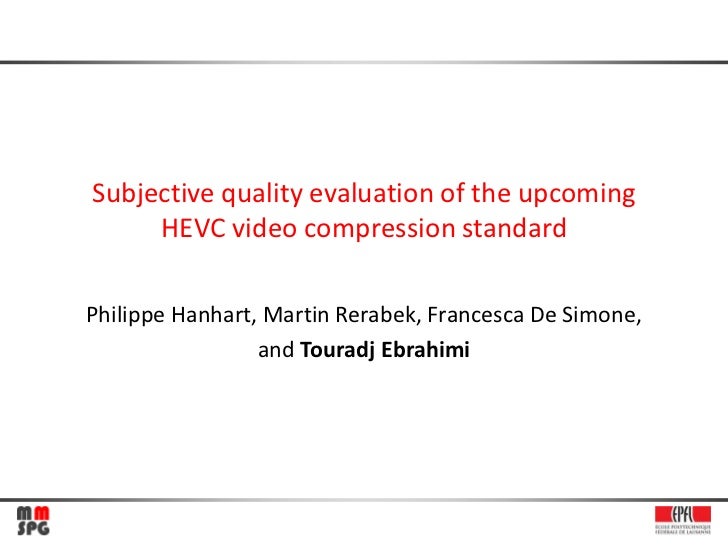In their study, the next generation compression standard has been evaluated in comparison to the current standard, namely AVC, by means of subjective evaluation performed on resolution beyond HDTV. The evaluation was performed on three contents with different spatio-temporal characteristics, including both natural and synthetic contents, encoded at five different bit rates for each codec and content. Subjective quality scores related to a total of 30 test stimuli have been collected. The obtained results show high consistency and allow an accurate comparison of the performance of the two codecs.
The test results clearly exhibited a substantial improvement in compression performance, as compared to AVC. In most cases, a significant difference is observed between HEVC and AVC for a similar bit rate. For the natural contents considered in this study, a bit rate reduction ranging from 51 to 74% can be achieved based on subjective results while the predicted reduction based on PSNR values was only between 28 and 38%. This difference is mostly due to the fact that PSNR doesn't take into account the saturation efect of the human visual system. PSNR also doesn't capture the full nature of the artifacts: AVC compressed sequences exhibit blockiness while HEVC compression tends to smooth out the content, which is less annoying. For the synthetic content considered in this study, a 75% bit rate reduction can be achieved based on subjective results while the predicted reduction based on PSNR values was 68%.
According to JCT-VC, double the compression e ciency of AVC is expected to be achieved. This paper confirms that a signi cantly higher compression performance can be achieved on resolutions beyond HDTV, manly thanks to increased prediction flexibility and a wider range of block sizes. As ultra high definition television has recently been demonstrated to be the future of television, the upcoming HEVC video compression standard seems to be one of the key elements towards a wide deployment of 4K and 8K resolutions.

No comments:
Post a Comment